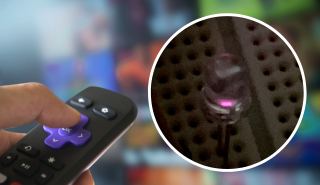University of Reading Simplifies Weather Experiments Using TV Remote Lights
Repurposing the lights commonly found in TV remotes for invisible channel switching could improve pioneering new experiments to encourage rainfall.
A new application for light-emitting diodes (LED) will make it simpler for scientists to carry out experiments that require high-voltage devices, such as using UAVs to modify water drops in fogs and clouds.
High voltage points – called electrodes – create one-sided electric charges (known as ions), and are used in experiments involving atmospheric charge dispersal. Monitoring the current flowing is important to show the equipment is working, and to allow the amount of charge released into the air to be found. This has previously required complicated systems, which are tough to fit into the small aircraft used for charge dispersal. A research team at Reading have found that the typical charge release currents can faintly illuminate a LED, with the light received by a sensitive optical detector a short distance away able to provide the measurement needed.
The new method, described in the journal Review of Scientific Instruments, will also be safer as it separates the high voltage parts from the rest of the apparatus using the light beam.
Professor Giles Harrison, Professor of Atmospheric Physics at the University of Reading, was lead author on the paper. He said: “The infra-red LED we are using is similar to those in a TV remote. Although you don’t usually see the TV remote light up because it is not operating at a visible wavelength, with a smartphone camera, you often can.
“We found that, even using a tiny current, the very dim infrared light generated from the LED is detectable, and, more importantly, provides a useful measurement of the current passing.”
Co-author Dr Veronica Escobar-Ruiz, also of the University of Reading, added: “For the many high voltage applications in which a measurement of ion current is wanted, such as charge dispersal and even aircraft propulsion, this novel use of a simple LED can remove the need for elaborate measuring equipment.”
New applications
The new method is being applied to monitoring charge dispersal into the atmosphere, from aircraft or small airborne platforms. LEDs are basic electronic parts which can be seamlessly integrated into these platforms and other systems.
Dispersing atmospheric charge from UAVs and other aircraft is being investigated as a possible method of weather modification, and is being evaluated in combination with existing cloud seeding operations in an experiment in the United Arab Emirates called CLOUDIX. The LED-based technology can provide accurate monitoring of the ionization released, allowing for more precise and controlled cloud seeding experiments.

